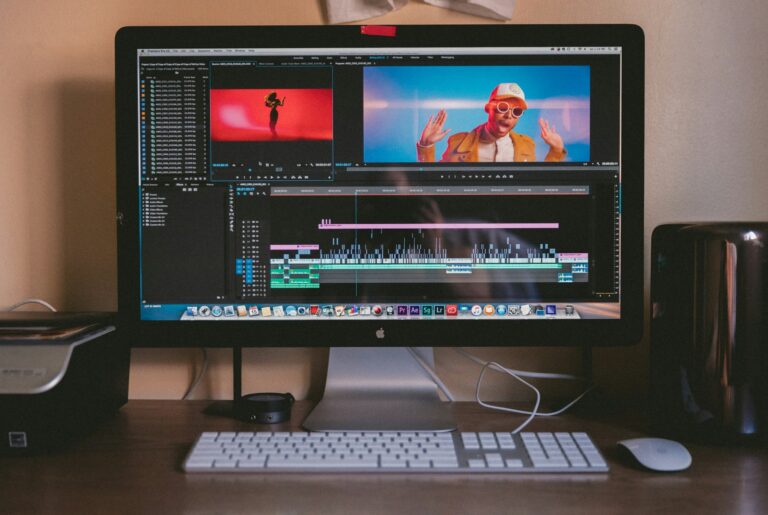When someone clicks on a video, there’s a tiny window of time before they decide whether to keep watching or bounce. That’s where scripting comes in. A good script guides the entire flow of your video, helping you hold attention, build curiosity, and keep viewers watching until the very last second.
Think of it like writing a roadmap. Without it, you might wander off-topic, repeat yourself, or lose the energy that made your idea exciting in the first place. But with a well-thought-out script, you can deliver your message clearly while still sounding natural and engaging.
So, how do creators actually do that? Let’s break it down.
Hook Them in the First Few Seconds
Every video lives or dies by its opening. The first 5–10 seconds determine if people stick around. Instead of starting with a long intro, creators can script a hook that immediately signals why the video matters.
That could be:
- A bold statement that challenges what viewers think.
- A quick problem that viewers recognize in their own lives.
- A mini-preview of what they’ll learn by the end.
Even something as simple as: “Most creators waste hours editing videos that don’t even hold attention, let’s fix that today.” instantly sets the stage.
By scripting this upfront, you avoid rambling and ensure your video grabs attention right away.
Keep the Energy Flowing with Sections
Once you’ve hooked viewers, the script should keep them moving smoothly through the content. A great trick is to structure the script like chapters in a story.
Instead of one long monologue, break the content into sections with natural transitions:
- “Here’s the problem.”
- “Now let’s explore the solution.”
- “And finally, here’s how you can apply it.”
This flow helps the audience follow along without feeling lost. Think of it as leaving stepping stones across a river, you’re guiding viewers from one idea to the next without ever letting them sink.
Script for the Ear, Not the Eye
One of the biggest mistakes creators make is writing scripts like essays. Videos are spoken content, so the script should sound like a conversation, not a textbook.
That means shorter sentences, contractions (like you’ll instead of you will), and phrasing that feels like everyday speech. If a sentence looks fine on paper but feels stiff when read aloud, rewrite it until it flows naturally.
A helpful hack? Read your script out loud as you write it. If you stumble, your audience will too.
Use Curiosity to Pull Viewers Along
The best scripts leave breadcrumbs that keep people curious. Instead of revealing everything upfront, creators can script little teases that make the viewer want to stick around.
For example: “Later in this video, I’ll show you the one editing trick that instantly doubles watch time.” That hint doesn’t just keep attention, it makes the audience feel like there’s a reward for staying engaged.
Think of it like a TV show. Each commercial break ends on a cliffhanger, because the producers know you’ll stick around if you want to see what happens next. Creators can use the same principle in scripting.
Balance Structure with Personality
Yes, a script should guide the flow, but it shouldn’t box you in. The goal is to have a clear plan while still leaving space for natural expression.
Creators can write bullet points for key ideas instead of word-for-word sentences. This approach keeps you from sounding like you’re reading, while still preventing tangents or awkward pauses.
If you’re someone who gets nervous on camera, try highlighting specific words or phrases in your script that you must hit. That way, you won’t lose the heart of your message even if you riff a little.
Add Value with Visual Cues
A script isn’t just about what you say, it also shapes what the audience sees. Writing in notes like “cut to screen recording here” or “insert example clip” helps you plan where visuals will reinforce your message.
This technique doesn’t just keep your video engaging, it also saves hours in editing, since you’ll know exactly what footage or graphics you need.
And speaking of visuals, creators often find tools like Canva incredibly useful for quickly designing on-screen graphics, lower thirds, or thumbnail elements that tie everything together. Even if you don’t use Canva specifically, the principle applies: choose a tool that lets you add polish without wasting time.
Close with Impact, Not a Fade-Out
Too many videos just trail off. But the ending is your chance to make a lasting impression. A strong script should wrap up with:
- A quick summary of the value delivered.
- A clear next step for the viewer (like subscribing, commenting, or checking out another video).
- A final line that leaves energy lingering instead of falling flat.
Think of the ending as the echo. Even after the video is over, the script should leave the audience thinking… or better yet, taking action.
Final Thoughts
Scripting videos doesn’t mean memorizing every word or killing your personality. It’s about creating a roadmap that helps you stay clear, engaging, and memorable from start to finish.
When creators use hooks to grab attention, break content into digestible sections, write conversationally, sprinkle in curiosity, and close with impact. They’re not just making videos, they’re creating experiences people want to come back to.
And here’s the best part: like any skill, scripting gets easier the more you do it. With practice, creators will learn to anticipate how their audience thinks, feels, and responds. That’s how you move from “just another video” to content that truly sticks.






